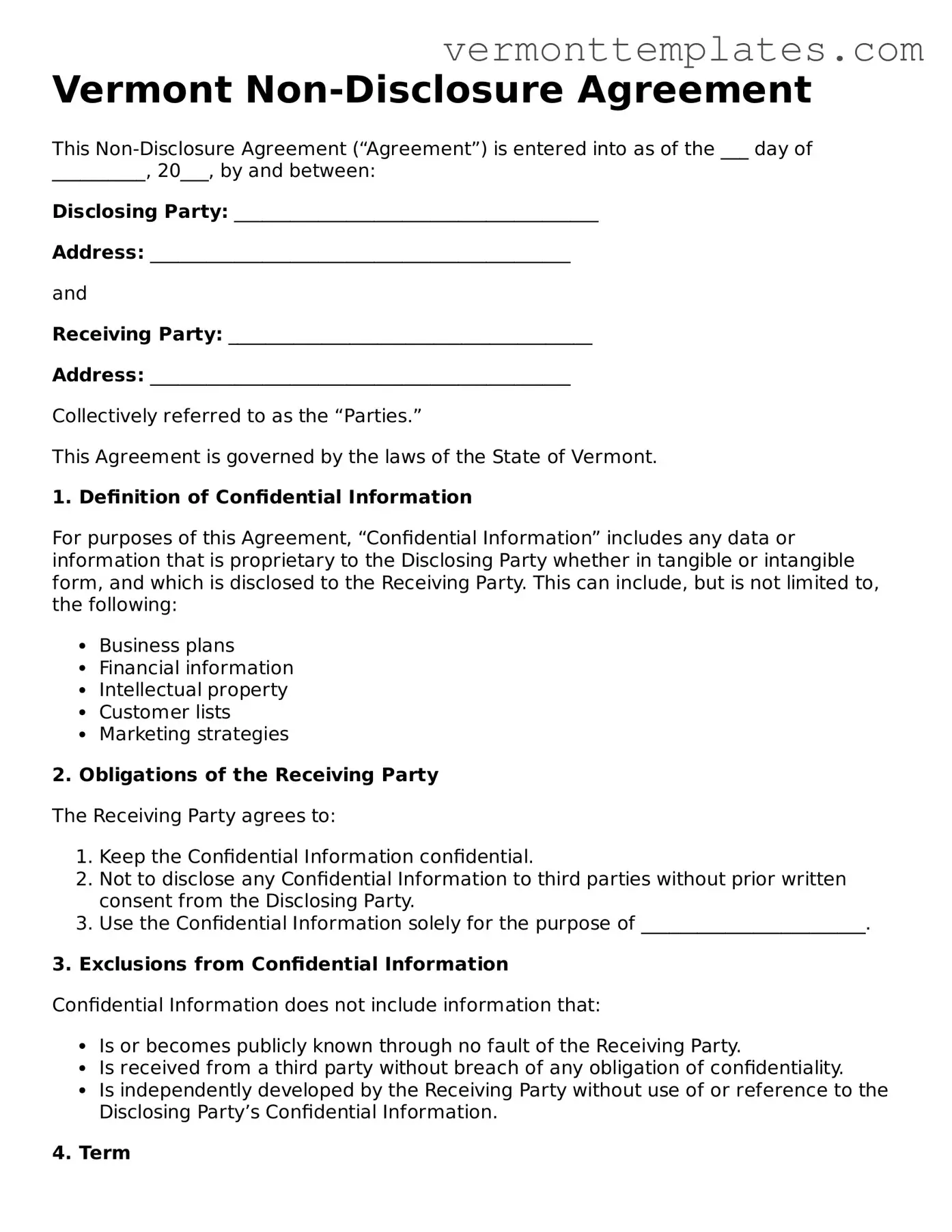Vermont Non-Disclosure Agreement
This Non-Disclosure Agreement (“Agreement”) is entered into as of the ___ day of __________, 20___, by and between:
Disclosing Party: _______________________________________
Address: _____________________________________________
and
Receiving Party: _______________________________________
Address: _____________________________________________
Collectively referred to as the “Parties.”
This Agreement is governed by the laws of the State of Vermont.
1. Definition of Confidential Information
For purposes of this Agreement, “Confidential Information” includes any data or information that is proprietary to the Disclosing Party whether in tangible or intangible form, and which is disclosed to the Receiving Party. This can include, but is not limited to, the following:
- Business plans
- Financial information
- Intellectual property
- Customer lists
- Marketing strategies
2. Obligations of the Receiving Party
The Receiving Party agrees to:
- Keep the Confidential Information confidential.
- Not to disclose any Confidential Information to third parties without prior written consent from the Disclosing Party.
- Use the Confidential Information solely for the purpose of ________________________.
3. Exclusions from Confidential Information
Confidential Information does not include information that:
- Is or becomes publicly known through no fault of the Receiving Party.
- Is received from a third party without breach of any obligation of confidentiality.
- Is independently developed by the Receiving Party without use of or reference to the Disclosing Party’s Confidential Information.
4. Term
This Agreement shall commence on the effective date and continue for a period of _____ years, unless terminated in writing by either Party.
5. Miscellaneous
This Agreement constitutes the entire agreement between the Parties regarding its subject matter. Any amendments must be in writing and signed by both Parties.
IN WITNESS WHEREOF, the Parties are signing this Agreement as of the date first above written.
Disclosing Party Signature: _____________________________
Date: _______________________________________
Receiving Party Signature: _____________________________
Date: _______________________________________
